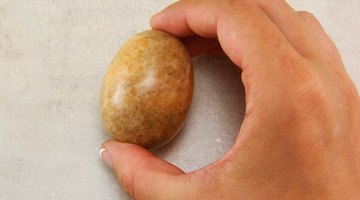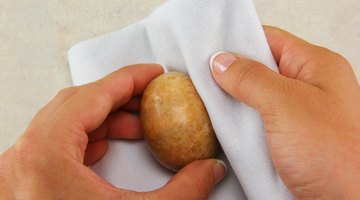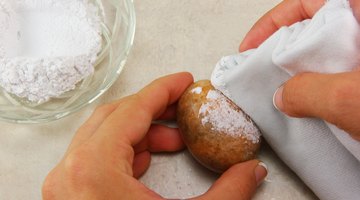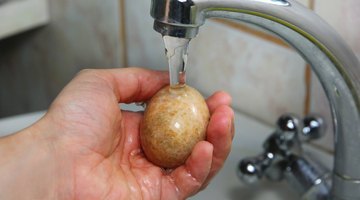How to Clean Alabaster
Alabaster is a water-soluble stone, more finely grained and fragile than marble, soft enough to carve and polish to a high gloss like soapstone. Artists love it because it sculpts so readily. Cabinetmakers have used it for inlays thanks to its fine finish and easy shaping.

You may find it as a tabletop, lamp base or shade, sculpture -- such as bookends -- or other decorative objects in your home. Alabaster stains, collects grime, scratches and shows damage that requires delicate cleaning. A really valuable piece should be restored by a professional, but you can clean most alabaster with appropriate care.
Things You Will Need
- Clean, soft cloths
- Soft-bristled brush or artist paintbrush (optional)
- Shallow saucer or bowl
- Borax
- Natural sponge (optional)
-
Dust the piece of alabaster with a soft, clean cloth or soft-bristled brush to remove all loose surface dirt. The stone absorbs stains, and can be scratched with a fingernail, cracked or chipped very easily. It may look like marble, but you should treat it like fragile porcelain. Regular dusting prevents the accumulation of difficult to remove grime buildup. Carved incisions can be dusted with a fine, natural hair painter's brush.
-
Pour dry powdered borax into a shallow bowl or saucer to begin a more ambitious cleaning. Dampen a soft, untreated cloth just slightly with plain water; dip it into the borax and rub the cloth gently on the alabaster. Test the cleaning method first, if possible, on a hidden section of the object -- a side panel of an inlaid chest or the underside of a carving. Borax is very mild and won't scratch alabaster's delicate surface. But don't rub vigorously because any abrasion could damage rather than just cleaning it.
-
Rinse the light film of borax paste and the loosened grime away with warm water. If the piece can't be placed under running water, use another cloth or a clean natural sponge that has no particles of sand or shell in it, repeatedly dipped into clear water, to thoroughly remove the borax.
-
Buff the cleaned alabaster gently with a soft cloth until it is completely dry. Alabaster is water-soluble and moisture left on the surface could damage it.




Tip
Display or store the alabaster away from intense sunlight or extreme heat from lamps, areas such as kitchens where airborne grease particles could settle on it, and any exposure to the outdoors, where alabaster will weather rapidly. Consider leaving stains and other evidence of aging on an alabaster decoration. The patina of age is part of the charm of an antique or sentimental piece. Protect it from further deterioration with frequent dusting. A conservation expert might use an emulsion of mineral spirits to clean a badly soiled piece of alabaster, wiped off immediately with plain mineral spirits on a swab or clean cloth, and finally wiped or rinsed clean and buffed dry. Only attempt this at home on an alabaster item that is not irreplaceable, antique or extremely valuable.
Warning
Mineral spirits should only be used in a well-ventilated area. Avoid breathing the fumes or prolonged contact with your skin.
The Drip Cap
- Alabaster is a water-soluble stone, more finely grained and fragile than marble, soft enough to carve and polish to a high gloss like soapstone.
- Artists love it because it sculpts so readily.
- Dust the piece of alabaster with a soft, clean cloth or soft-bristled brush to remove all loose surface dirt.
- The stone absorbs stains, and can be scratched with a fingernail, cracked or chipped very easily.
- If the piece can't be placed under running water, use another cloth or a clean natural sponge that has no particles of sand or shell in it, repeatedly dipped into clear water, to thoroughly remove the borax.
References
Resources
Writer Bio
Benna Crawford has been a journalist and New York-based writer since 1997. Her work has appeared in USA Today, the San Francisco Chronicle, The New York Times, and in professional journals and trade publications. Crawford has a degree in theater, is a certified Prana Yoga instructor, and writes about fitness, performing and decorative arts, culture, sports, business and education .
Photo Credits
- Alexandra Cristina Negoita/Demand Media
- Alexandra Cristina Negoita/Demand Media
- Alexandra Cristina Negoita/Demand Media
- Alexandra Cristina Negoita/Demand Media
- Alexandra Cristina Negoita/Demand Media
- Alexandra Cristina Negoita/Demand Media
More Articles



